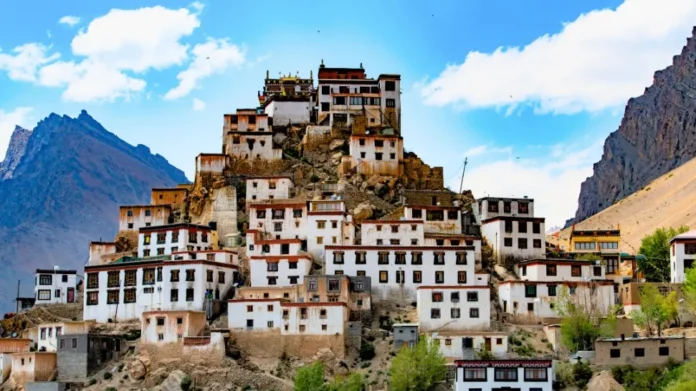Table of Contents
Introduction
Tucked away in the rugged heart of Himachal Pradesh, Spiti Valley is a surreal blend of ancient monasteries, dramatic mountain landscapes, and raw Himalayan beauty. Often called the “Middle Land” between India and Tibet, this remote high-altitude desert offers more than just postcard views — it’s a soulful experience for travelers craving peace, adventure, and cultural depth. Whether you’re a road trip enthusiast, a photography lover, or a seeker of solitude, this guide will help you plan your dream escape to one of India’s most breathtaking and untouched regions.
Where Is Spiti Valley?
Spit Valley is a cold desert Mountain Valley located in the Lahaul and Spiti districts in the Indian state of Himachal Pradesh. Near the Tibetan border, located in the northeastern part of the Himachal, the speech sits at an average height of more than 3800 meters, making it one of the highest homes in India.
The name of speech means “the middle Land” – both culturally and geographical reference to their location between Tibet and India. The valley is characterized by the curious mountains, ancient Buddhist monasteries, dark -white and crystal climate, which offers a scenario similar to Tibet and Ladakh.
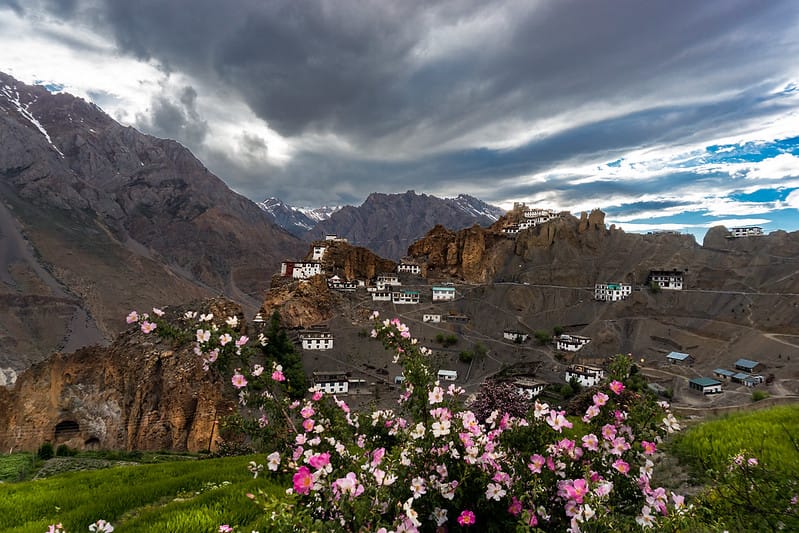
Top Places to Visit in Spiti Valley
Spiti Valley is dotted with old monasteries, remote villages and real landscapes that feel they are on another planet. Here are the best places you should travel completely on your journey through this Himalaya wounderland:
- Kaza
Kaza is the administrative and cultural heart of the Spity Valley. It is the best place to find decent hotels, Homestay and comfortable café such as the Himalaya Cafe. Go to Seren Sakya Monastery and find out the local market before heading out to the nearby high-altitude villages. - Key Monastery
The largest and most iconic monastery in Spiti, Key Monastery is over 1,000 years old. It sits majestically on a hilltop, offering breathtaking panoramic views of the Spiti River and surrounding valley — a perfect blend of spirituality and raw Himalayan beauty. - Kibber Village
Kibber was once considered the highest motorable village in the world, sitting at an altitude of 14,200 feet. It’s an excellent base for wildlife enthusiasts looking to spot snow leopards and blue sheep, especially during winter treks into the neighboring Pin Valley. - Langza
Langza is famous for its enormous Buddha statue that peacefully watches over the valley. The village is also a fossil treasure trove — millions-of-years-old marine fossils can still be found here, hinting at the time when this high-altitude desert was underwater. - Hikkim
Hikkim is home to the world’s highest post office, a truly unique experience. Sending a postcard from Hikkim is a small yet unforgettable act — a message sent from the top of the world, quite literally. - Tabo Monastery
Dating back more than a millennium, Tabo Monastery is one of the oldest functioning Buddhist enclaves in India and a UNESCO World Heritage Site candidate. Its ancient murals and mud-walled meditation caves have earned it the nickname “Ajanta of the Himalayas.” - Dhankar Monastery and Lake
Perched precariously on a cliff between the Spiti and Pin rivers, Dhankar Monastery is an architectural marvel. A steep but rewarding trek behind the monastery leads to the secluded Dhankar Lake, one of the hidden gems of the valley. - Chandratal Lake
Also known as the “Moon Lake,” Chandratal is a crescent-shaped alpine lake near Kunzum Pass. The crystal-clear waters reflect the surrounding peaks, especially during sunrise and sunset. Camping near the lake under a blanket of stars is an unforgettable experience — but note, it’s accessible only from June to September.
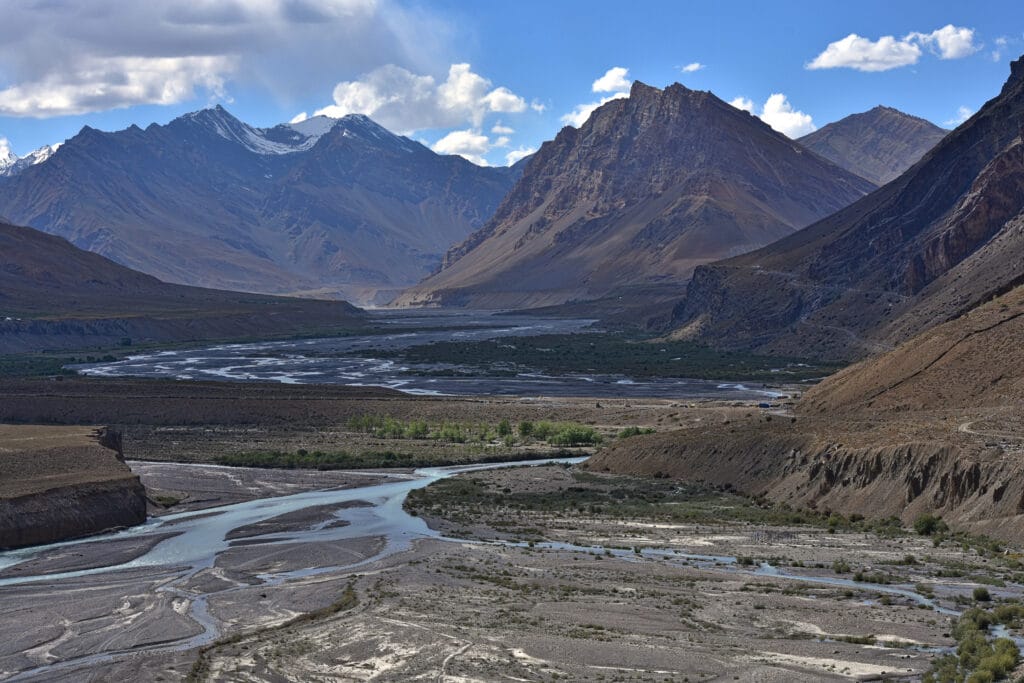
Things to Do in Spiti valley
- Trekking: Pin Parvati Pass, Hampta Pass, Spiti to Ladakh over Parang La
- Stargazing: Crystal clear skies make for amazing astrophotography
- Biking: Spiti is a biker’s paradise – rent in Manali or Shimla
- Meditation: Join a retreat or spend a few days at Key Monastery
Best Time to Visit Spiti Valley
| Season | Months | Weather | What to Expect |
|---|---|---|---|
| Summer | May – Oct | Pleasant days, cold nights | Ideal for sightseeing, treks, and full-circuit travel |
| Monsoon | July – Sept | Landslides on Shimla route | Travel via Manali if roads are safe |
| Winter | Nov – Mar | Extreme cold (-20°C) | Limited access, frozen rivers, snow-covered villages |
How to Reach Spiti Valley in 2025
Route 1: Via Manali (Shortest & Most Scenic) : This is the quickest and most adventurous way to reach Spiti. The route goes from Manali → Rohtang Pass → Gramphu → Kunzum Pass → Kaza, covering approximately 200 km in 8–10 hours. It opens only during the summer months (June to October), as Rohtang and Kunzum Passes are shut due to snow in winter.This route offers dramatic landscapes, river crossings, and a real sense of thrill. Ideal for seasoned travelers and backpackers, you can take this route via jeep, shared cab, self-drive vehicle, or Himachal tourism buses (available seasonally).
Route 2: Via Shimla (All-Season Route): The longer but safer and more accessible route goes from Shimla → Narkanda → Rampur → Reckong Peo → Nako → Tabo → Kaza, spanning around 450 km and usually done over 2 days with scenic stopovers. Unlike the Manali route, this one stays open for a longer part of the year (April to November), weather permitting. This is the best route for first-time visitors, as the gradual climb helps with altitude acclimatization. The roads are better maintained, and services like buses, taxis, and homestays are more frequent along the way.
Accommodation Options
- Kaza: Popular choices include Zostel, The Alpinist, and Moustache Hostel, perfect for solo travelers and backpackers
- Homestays with Local Families – Stay in traditional mud houses, enjoy home-cooked meals, and immerse yourself in daily life.
- Villages like Langza (known for fossils and Buddha statue), Kibber (high-altitude charm), and Tabo (home to the ancient monastery) are serene, scenic, and soulful.
- Chandratal: Tent campsites (book in advance during peak seasoned during (June to September) due to limited availability).
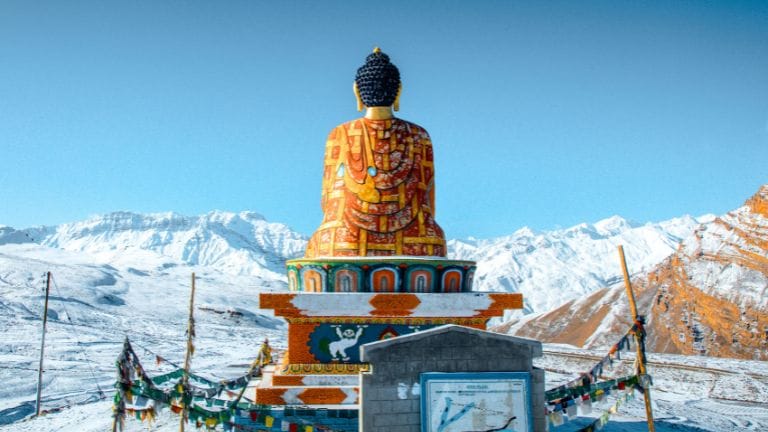
Food & Culture
- Must-try dishes: Thukpa, Momos, Butter Tea, Tsampa, and Chang (local brew).
- Spiti is predominantly Buddhist, and its culture is shaped by centuries of Tibetan influence. Monasteries like Key, Tabo, and Dhankar are spiritual centers where rituals, festivals, and community life revolve around peace, compassion, and resilience.
- Avoid plastic and follow Leave No Trace principles.
7-Day Spiti Valley Itinerary – Immersive & Memorable
- Day 1 – Shimla / Manali to Kalpa / Kaza
Start your journey via Shimla (gradual climb) or Manali (scenic, adventurous). Stay overnight at Kalpa (if via Shimla) or reach Kaza (if via Manali). - Day 2 – Acclimatization in Kaza
Rest, explore the local market, visit Kaza Monastery, and enjoy local Spitian food. - Day 3 – Key, Kibber & Hikkim
Visit Key Monastery, spot wildlife in Kibber, and send a postcard from Hikkim – the world’s highest post office. - Day 4 – Langza & Komic
Explore the fossil village Langza, and visit Komic – one of the world’s highest villages. Perfect for stargazing at night! - Day 5 – Tabo & Dhankar
Head to Tabo Monastery (more than 1000 years old) and hike to Dhankar Lake if time and energy permit. - Day 6 – Chandratal Lake
Drive to the magical Chandratal Lake. Camp under the stars by the lake (book in advance). - Day 7 – Return via Manali / Shimla
End your trip with a scenic drive back. Optional stop at Rohtang Pass (if open).
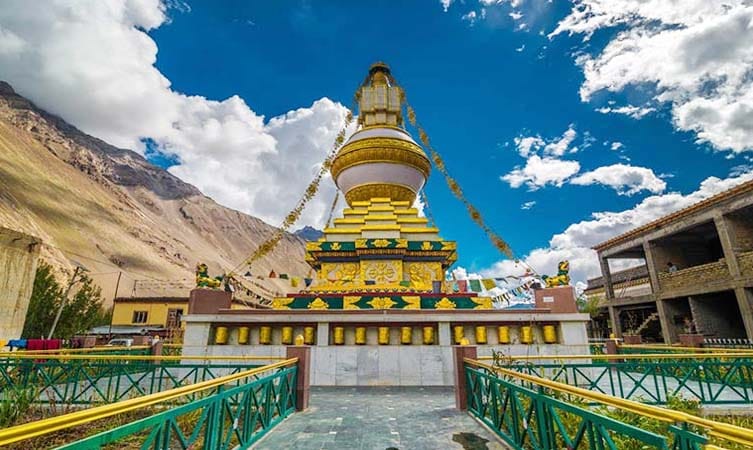
conclusion
Spiti Valley is not just a destination—it’s an emotion. A place where time slows down, mountains whisper ancient stories, and every sunrise feels sacred. Whether you’re stargazing at Chandratal, sipping butter tea with locals in a tiny mud house, or simply breathing in the stillness of the high-altitude desert, Spiti touches something deep within you.It’s a journey of discovery—not just of landscapes and culture, but of yourself.
As Spiti Valley tourism continues to grow, it offers travelers a rare chance to witness untouched beauty, ancient wisdom, and authentic Himalayan life. So travel mindfully, support local communities, and leave no trace.
Pack your bags, open your heart, and let the magic of Spiti Valley change the way you see the world. Because once you’ve been to Spiti, a part of you always stays there.


